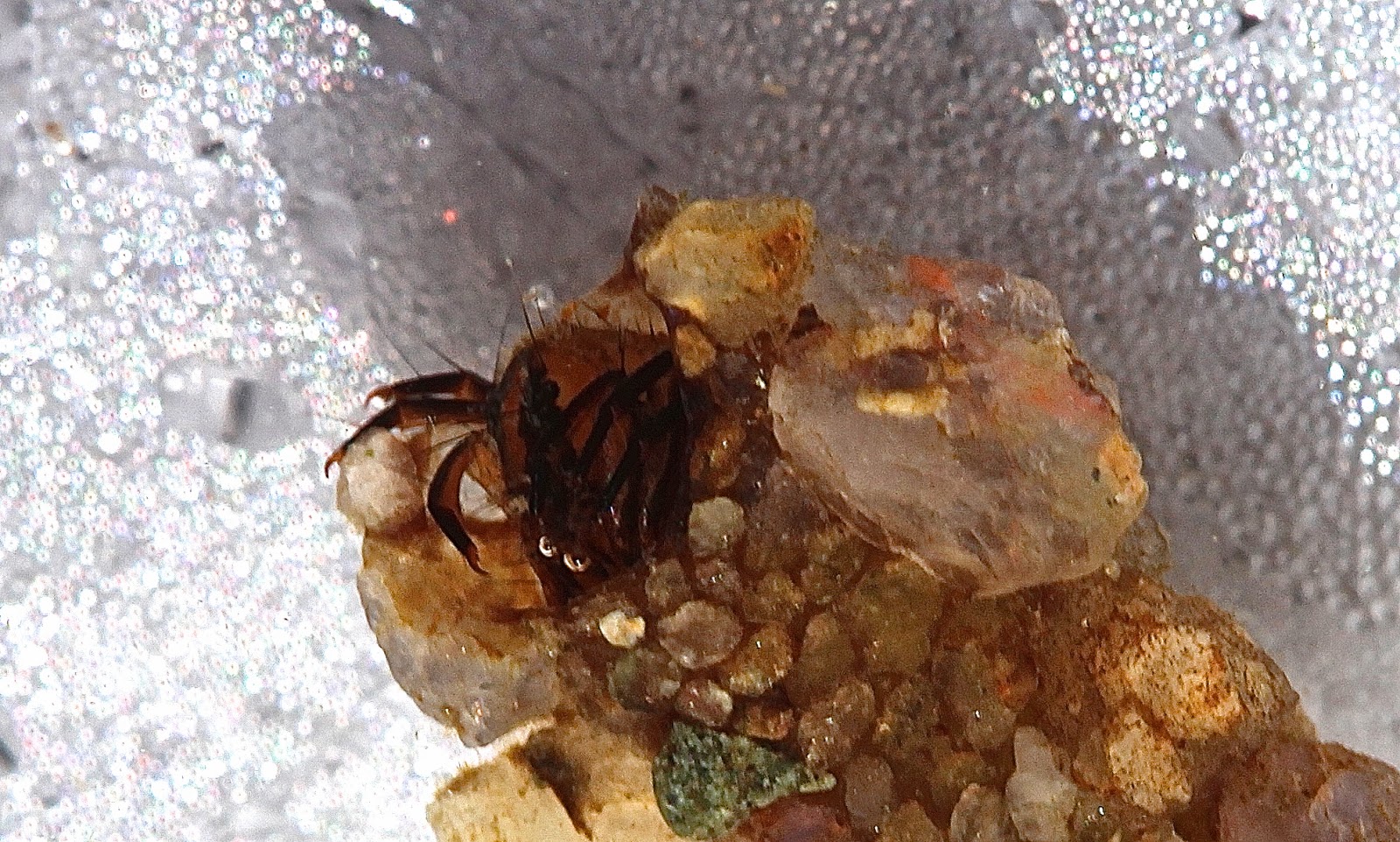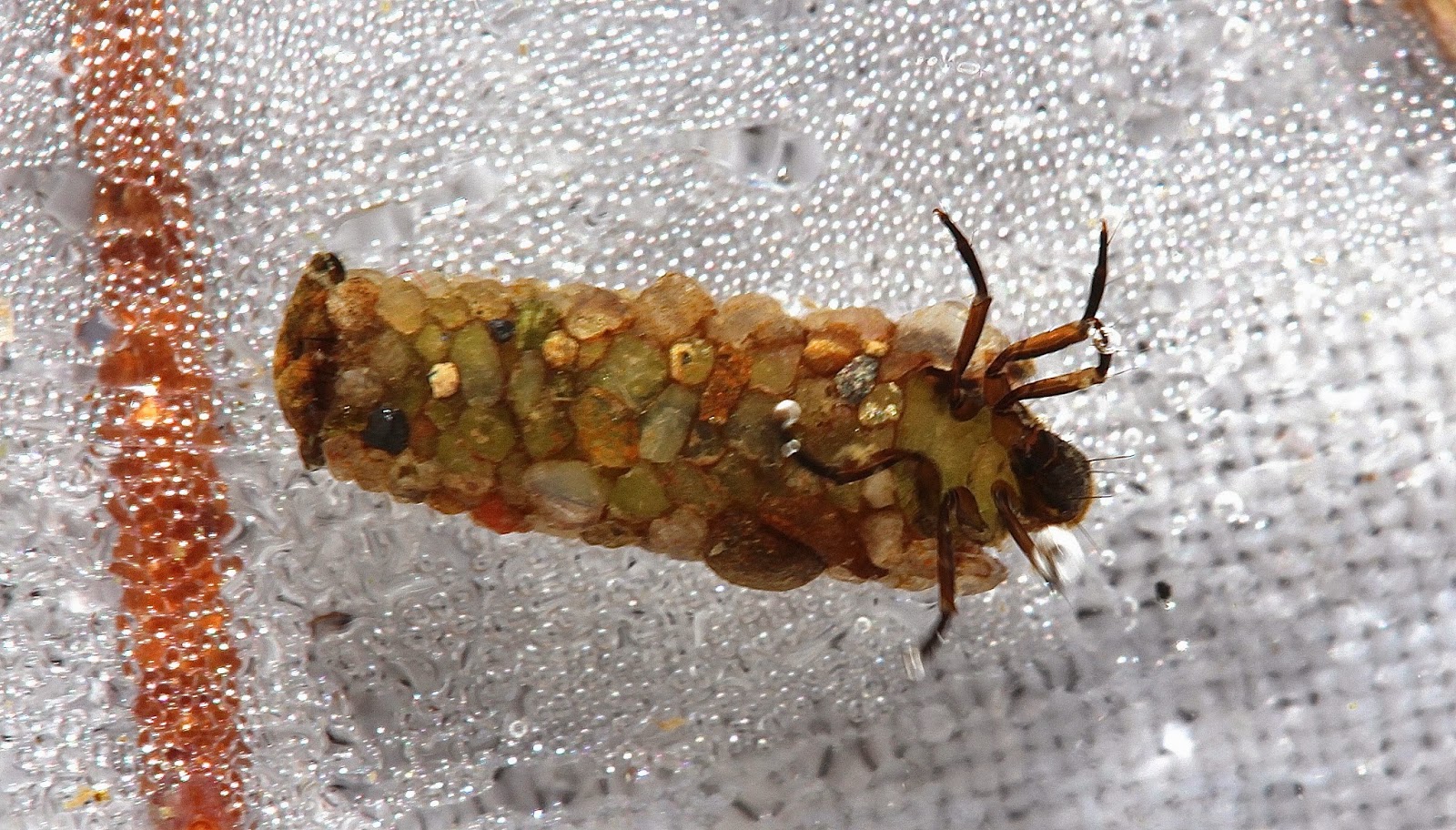(It was a balmy 32º when I bent over too far and got a boot full of water! Long morning.)
I suppose we could call this the "dance of love" -- male and female small winter stoneflies, Allocapnia pygmaea -- but I think they just got tangled up in the tray. Male on the left; female on the right. As with so many mayflies and stoneflies (nymphs), the males seem to be richer in color while the females are bigger in size -- this female was 6.5 mm, the male was 5.5 mm -- but it's the males that are used for species ID. For A. pygmaea two features that are used in ID are the dark, horizontal bands on the abdominal terga (male) and the length of the supra-anal lobe (twice as long as tergite 10). This:
The females often seem to mature -- from what I've seen -- with light colored wing pads vs. the dark pads we see on the males.
Beautiful nymphs. Almost worth getting a boot full of water!
But I also found some large winter stoneflies, both Taneiopteryx burksi/maura and Strophopteryx fasciata. Tis the season.
T. burksi/maura -- real proud of these photos.
S. fasciata -- note that the wing pads are starting to darken.
________________
And then there were the Uenoids. I'm not sure I've ever seen so many Uenoids in one place before. I looked at three rocks in a 3' square section of river: on one were 8 cases, another with 10, and the third was covered with 12. What a caddisfly hatch there must be here in the summer -- and no trout to eat them!
Species? The same two I find at Buck Mt. Creek: Neophylax oligius and Neophylax fuscus. I take it they like the same kind of water. Their cases, by the way, were noticeably different: the N. oligius cases were bigger and made of much bigger pebbles.
N. oligius 1
N. oligius 2
N. fuscus 1
N. fuscus 2
No microscope needed to ID Neophylax oligius. Note the long, orange stripe on the face (frontoclypeus) and the orangish underside of the head.
But the heads of the N. fuscus larvae didn't give me a clue.
So, off to the microscope in my lab. There I could see what I needed to see: 1) dark brown/black head with light muscle scars at the back; 2) no clavate ventral gills; 3) and 9-10 setae at the ventral sa3 position. (See Steven Beaty, "The Trichoptera of North Carolina," p. 87 and R. N. Vineyard, et.al., The Caddisfly Genus Neophylax, pp. 23-24.)
You'll recall that we should also see "large blade-like spines" on the anterior of the pronotum (Beaty, p. 87) -- these
-- but the spines were jammed with crystals on the larvae I kept, so I can't give you a photo.
_______________
One other case-maker there -- Apatania incerta -- the one with the "hood" at the top of its case.
________________
But the dancers were the catch of the day.























No comments:
Post a Comment